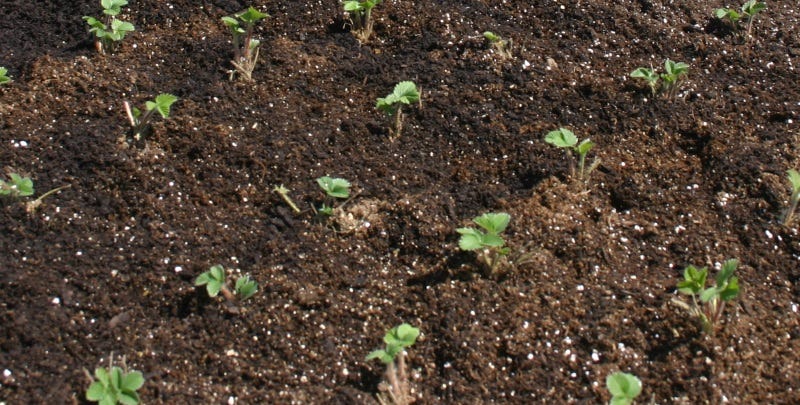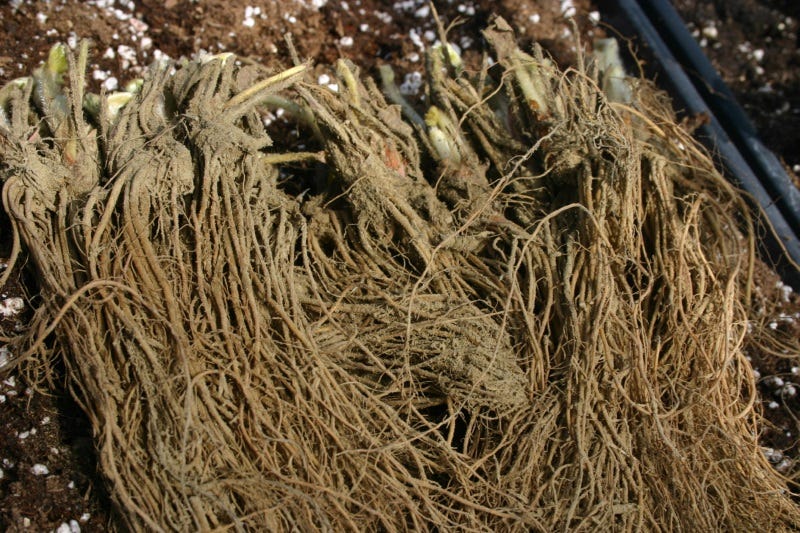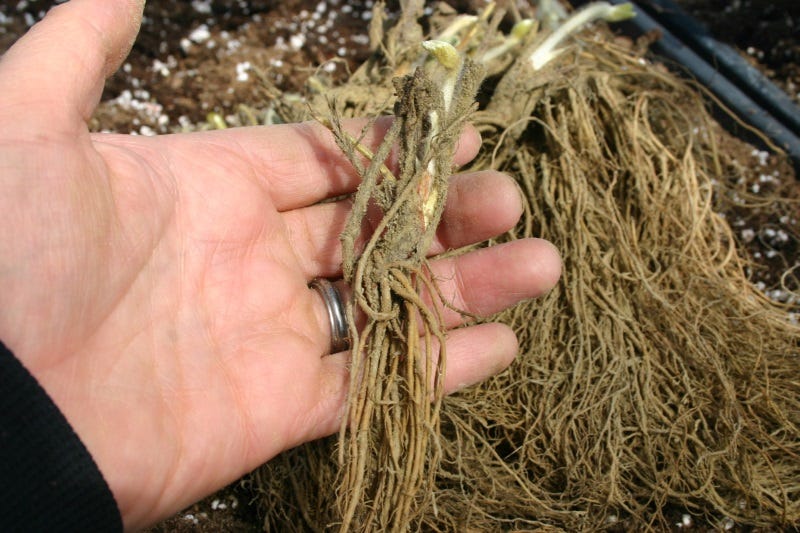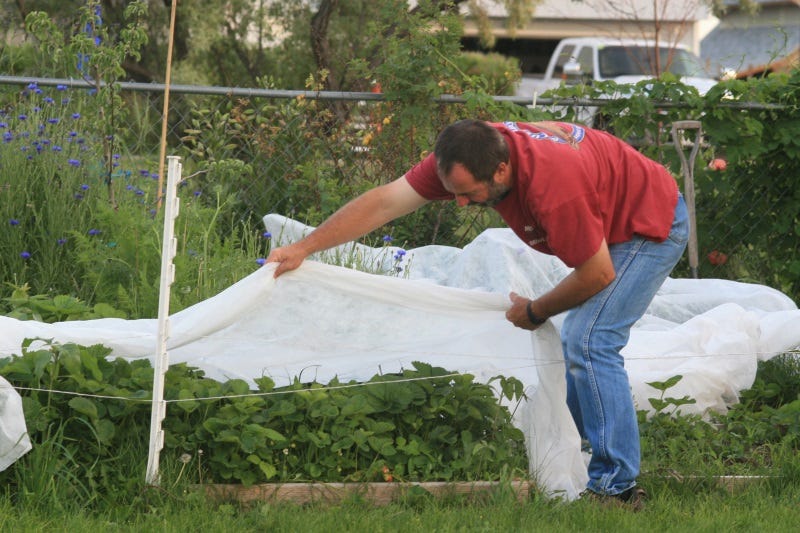How To Plant Strawberries, For Years of Sweet Reward


The bright red, luscious looking strawberries in the grocery store might be a shining example of perfection, but don’t let them fool you. The taste is closer to sweetened styrofoam. I’ve succumbed over the years to the store-bought berries, but am frequently disappointed. This year, I’m planting more beds of these delicious fruit to be able to eat them fresh, freeze them, can them, and hopefully dehydrate some for the trail. And this may be something you want to do, too.
 New strawberries in the bed
New strawberries in the bedChoosing June-bearing or ever-bearing berries
June-bearing is a bit of a misnomer as you can find varieties of strawberries that bloom at different times of the summer, but the basic premise is these strawberries give you a single big harvest in the summer, oftentimes with nice-sized berries. If you prefer larger crops, particularly if you enjoy making homemade jelly or other preserves, you can plant different varieties that ripen in the early, mid, and late season, which extends your harvest.
June-bearing varieties are also known for sending out more runners, the tiny “baby” straw-berry plants that expand your strawberry bed whether you want them to, or not. On the plus side, runners make creating new strawberry beds, or giving plants to friends, very easy. Yet, they are also higher maintenance since you don’t want them to overcrowd their space, which reduces production. ‘Sparkle’ is one of the more popular June-bearing varieties because of its flavor and abundant nature—a single plant produces roughly a pint of berries each summer.
Similar to fall-bearing raspberries, ever-bearing strawberries produce a few berries early in the season, kind of as a teaser, but the bulk of their harvest happens towards the end of summer. They are usually smaller in size than the June-bearers and they don’t produce as much, but they are hardy, often don’t have runners, and are exceptionally flavorful. A good example of an ever-bearing type is “Alpine,’”a tiny, almost wild, variety.
 New strawberry plants
New strawberry plantsHow to make a strawberry bed
Since strawberries are a perennial fruit, preparing a well-amended planting area pays off for years. If your soil is marginal, or you simply wish to maintain better control over the weeds in the straw-berry or where the runners go, raised beds are an excellent option. And it doesn’t have to be some-thing built by a rocket scientist.
For strawberries, a simple six-inch high bed with well-drained, nutrient rich soil keeps you in strawberries for years. You can use untreated lumber (it will take years to fail), rocks, bricks, or any number of materials to hold in the soil. Fill the bed with a combination of aged compost, aged manure, peat moss to lighten the mix, and a sandy loam, if available.
 Plant the entire root system to the line where the plant begins.
Plant the entire root system to the line where the plant begins.Planting strawberries
It’s a good time to plant your strawberries once the soil can be worked in the spring and it isn’t too wet—the last thing you want is compacted soil around these perennial plants. For June-bearing varieties, give them room to sprawl by allowing at least 14 inches between and even stretching it to 20 inches if space permits. Plant ever-bearing types closer to 14 inches apart, instead of the greater distance.
Dig a hole deep enough to encompass all of the roots, but not so deep as to bury the crown, the area above the root system. Use the line between the roots and the plant as your guide. In some situations, this might mean creating a six-to eight-inch high hill of soil to provide enough depth for the roots while keeping the plant above the soil line.
Plucking flowers
It is a painful, but you will have more abundant berries if you remove flowers the first year you plant your strawberries. For ever-bearing berries, just take them off during the first part of the summer, allowing the plant to use its energy for the harvest later in the season.
June-bearing varieties benefit from not having any fruit produced the first year, so be merciless if you have the heart by taking off all of the flowers. This means all of the energy is going into the plant, including encouraging runner development, so you will have a bumper crop the next season.
 Grant covering the strawberries with floating row cover to keep the birds away.
Grant covering the strawberries with floating row cover to keep the birds away.Keeping birds away
Birds are not dumb creatures. They know when your strawberries are ripe almost before you do, so be proactive in keeping them out of the strawberry patch by covering the plants with a fine mesh netting or floating row cover.
Tucking them in for the winter
One weakness of strawberries is they can heave out of the ground with continuous freezing and thawing cycles, which is why they benefit from a four-inch layer of straw, or a similar organic option. Mulch in the fall before cold weather sets in for the season. The following spring wait until you see new leaves poking out of the plants. They might be yellow due to the lack of sunshine, indicating that it is time to remove their protect layer of mulch.
Rejuvenating beds
Ever-bearing strawberries don’t typically become as crowded as the June-bearing types, but make sure you keep the beds free of weed pressure, and if the plants are growing too large and touching one another, you might want to begin dividing some of the plants.
June-bearers do the best when you divide the runners after they produce during the second, and subsequent years giving them plenty of room for next season.
For both types, kick off the second spring season by dressing them with a 10-10-10 fertilizer (triple 16 fertilizer will also work). If you give them a boost of nutrition each year, you will enjoy better berries in the long run.
Enjoy your favorite berry at your fingertips
While you may not have a bumper crop your first year of planting strawberries, before long heading to the strawberry patch will require a bigger bowl. Try different varieties to see which ones taste the best to you, as well as produce the size and quantity you want. The reality is you can never grow too many strawberries so put in as many as space allows.
